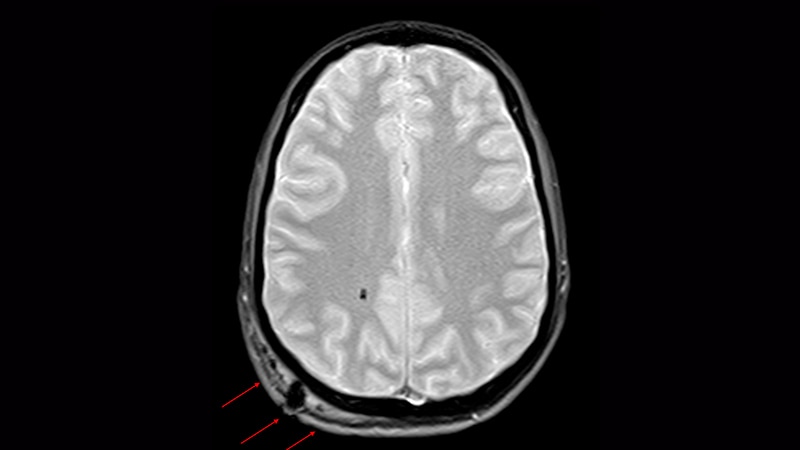Multiple concussions appear to disrupt the brain’s default mode network (DMN), which could increase the risk of long-term cognitive disruption, according to a new study presented at the Radiological Society of North America (RSNA) 2021 Annual Meeting.
Using resting-state functional magnetic resonance imaging (rs-fMRI), lead investigator Thomas Johnson, MD, PhD, a resident physician in neurology at the University of Rochester, in Rochester, New York, and colleagues detected significantly more DMN disruption among patients who had experienced three to five concussions, compared to those with one or two concussions, and significantly more DMN disruption in patients with two or fewer concussions compared to healthy control persons.
“We’re seeing evidence of a two-tier disease,” Johnson said in an interview with Medscape Medical News. “Experiencing several concussions might be a different or more severe pathology, [but] I think if we want to make statements about how many concussions people should tolerate, we need more long-term follow-up with functional outcomes, such as ability to return to a normal life, and detailed cognitive testing.”
The study included 142 patients (67 female; mean age, 18.2 years; age range, 9–60 years) and 27 healthy control persons (12 female; mean age, 20.7 years; age range, 18–28). The patients had a history of clinically diagnosed mild traumatic brain injury (mTBI) or concussion with postconcussion syndrome, including headaches, dizziness, fatigue, and irritability.
Brain images of the patients showed connectivity disruptions in the somatosensory cortex, which is responsible for processing somatic sensation, and in the supramarginal gyrus, which is responsible for creating associations with other sensory modalities, said Johnson. “My hope is to follow up with a battery of cognitive testing on these subjects to see if there are specific cognitive deficits that correlate with the fMRI findings,” he said. “My hypothesis is that we will see alterations in perceptions and processing of language, as well as empathy, all of which are reliant on the supramarginal gyrus.”
The findings are “potentially useful,” said Carmela Tartaglia, MD, who is associate professor and Marion and Gerald Soloway Chair in Brain Injury and Concussion Research at the Tanz Centre for Research in Neurodegenerative Diseases, University of Toronto, and co-director and cognitive neurologist at Toronto Western Hospital’s Memory Clinic, in Toronto.
But Tartaglia, who was not involved in the research, cautioned that “mTBI is not synonymous with concussion. We have recently shown that a lack of consensus on the diagnostic criteria of postconcussion patients makes it difficult to compare studies and probably contributes to the heterogeneity of results,” she explained.
She also noted that the age disparity between patients and control participants in the study could be a confounding factor. “Resting-state networks are affected by age, and so comparisons between patients and controls should be age-matched. If you look at the range of ages, they are very different; the age means are equal, but the subjects are not age-matched. The patients include much younger and older individuals compared to the controls.”
However, she said that “connectivity changes hold promise as a biomarker for subtle brain changes that are undetectable with conventional MRI. The issue will be to use connectivity analysis to identify the subgroup of patients with the network abnormalities instead of lumping all the patients with persisting symptoms together, as they are likely not all the same.”
No funding for the study has been reported. Johnson and Tartaglia have disclosed no relevant financial relationships.
Radiological Society of North America (RSNA) 2021 Annual Meeting: Abstract NR04-D6.
Kate Johnson is a Montreal-based freelance medical journalist who has been writing for more than 30 years about all areas of medicine. https://katejohnsonmednews.wordpress.com/about-the-author/
For more news, follow Medscape on Facebook, Twitter, Instagram, and YouTube.

